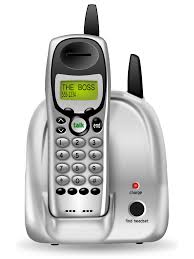What is the working principle of cordless phones?« Back to Questions List
|
Any wireless technology like the cell phones, radios, cordless telephones use radio waves for communication purpose. Radio waves are electromagnetic waves that do not need a medium to travel. A cordless phone is basically a radio transmitter/receiver that works on a specific frequency. The cordless phone has a base station and the handset which can used anywhere within a specified distance from the base. The frequency determines the signal clarity and the range over which the handset works. The base is connected to the phone line through a wire. Base acts as a normal telephone, receiving calls through the phone line as electrical signals. Then it converts the electrical signals to a radio signal and transmits that signal to the handset. The transmitted radio signal from the base is received by the handset. This signal is converted back to electrical signal and sent to the speaker. The speaker converts the electrical signal into the sound we hear. When we talk via the handset, our voice is transmitted to the base as radio signal where it is converted to electrical signal and transmitted through the phone line. The base and handset operate on a frequency pair that allows us to talk and listen at the same time, called duplux frequency. The above described principle is that of analog cordless phones. There are also digital phones that use a similar principle except for converting the signal into binary codes (zeros, ones) instead of radio signals and recreating it on the receiving end. The digital phones are costlier compared to the analog ones but gives distortion free calls. For distortion-free conversations at office, a digital 900 MHz or 2.4 GHz cordless phone could be a good choice. For use at home, a cheaper analog phone will give the richest sound quality and enough range.
|

